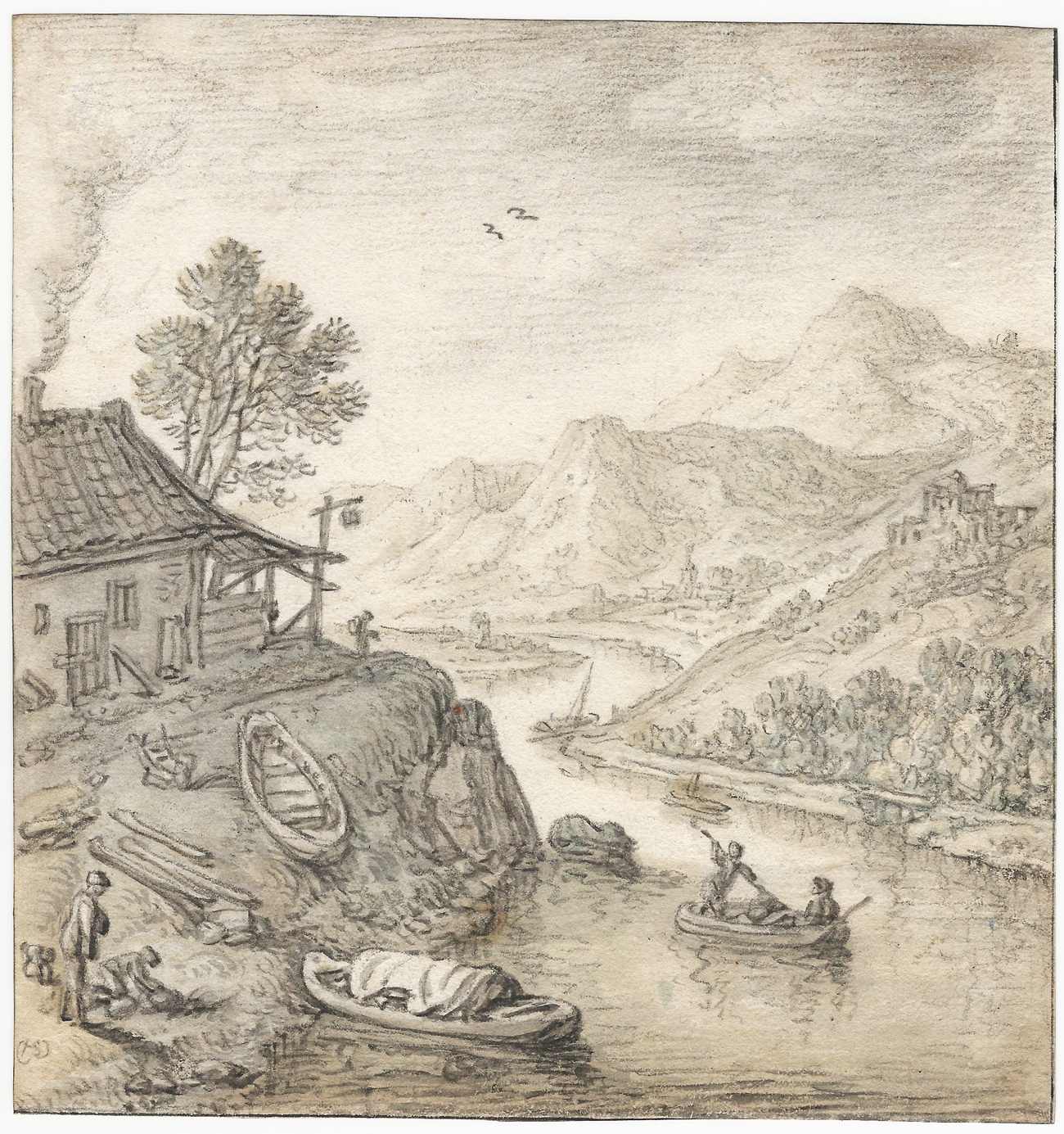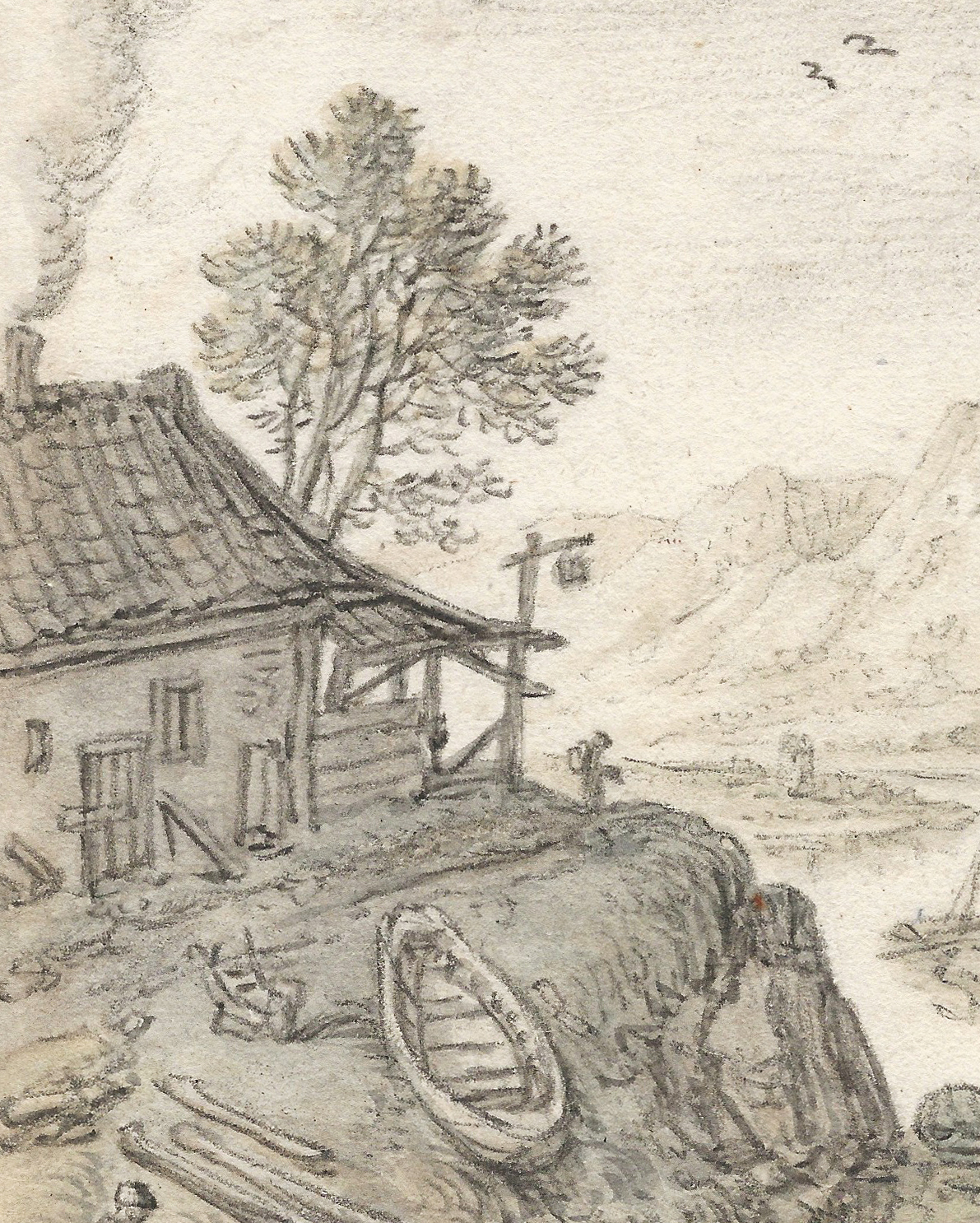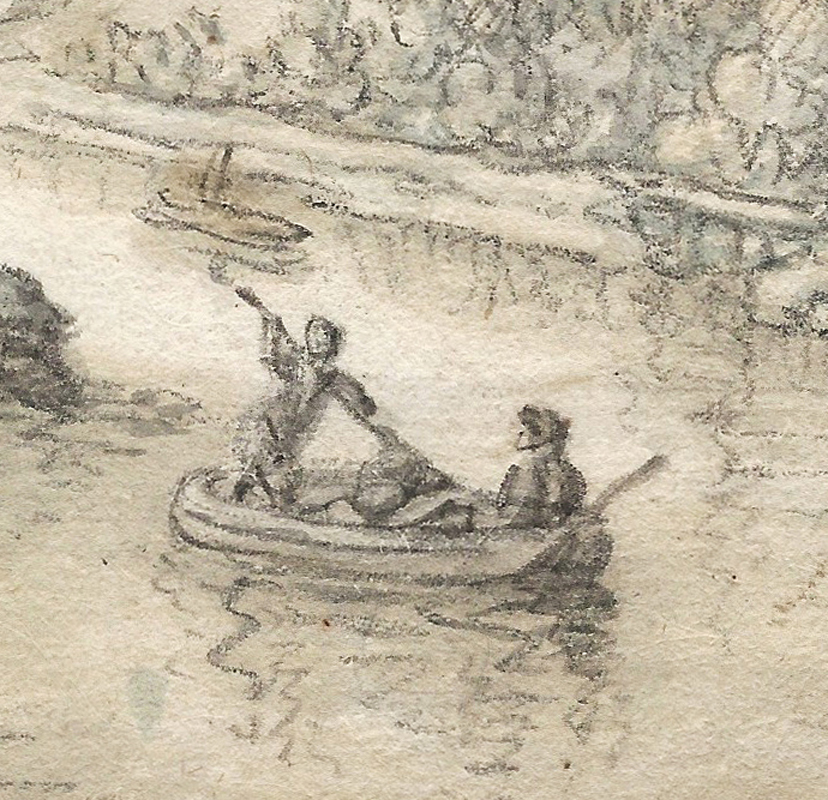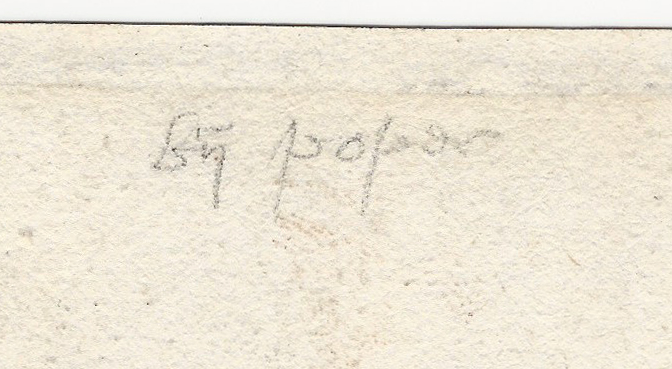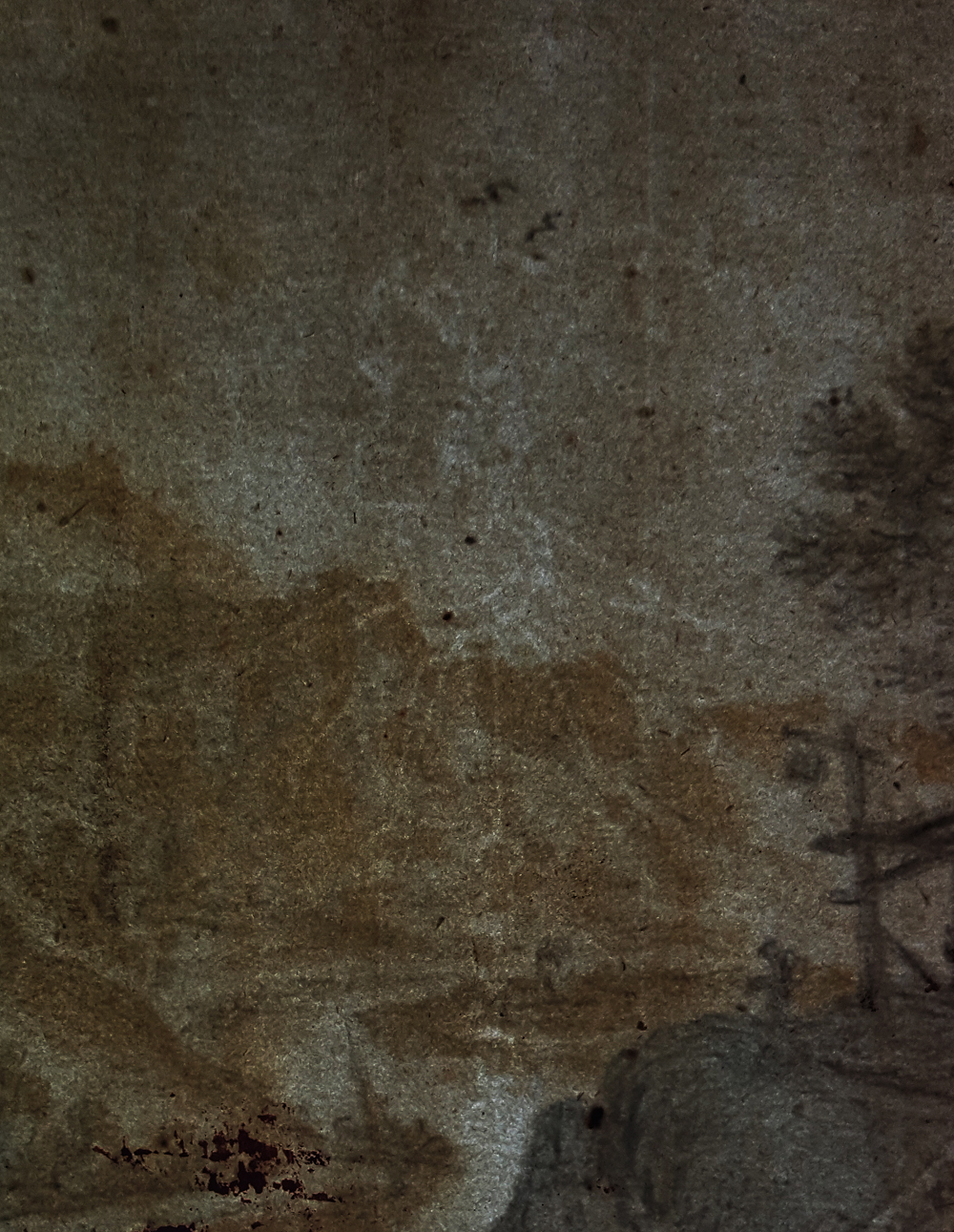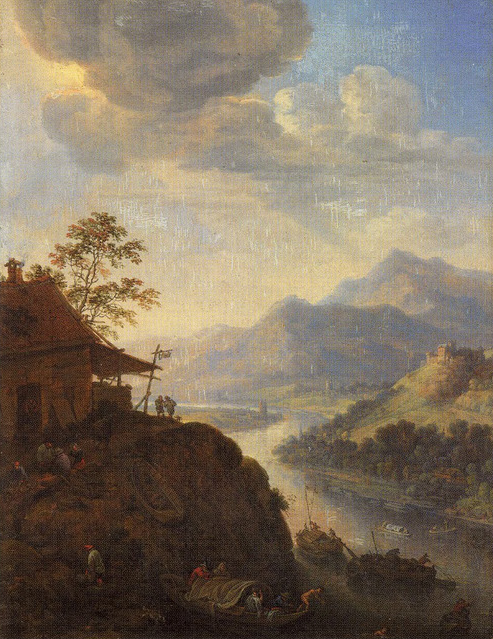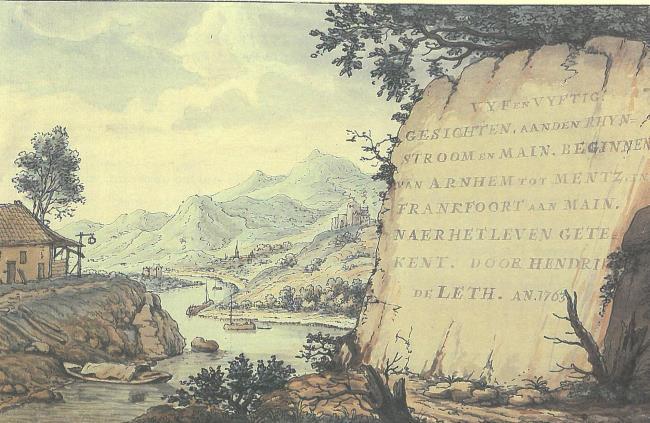HERMAN SAFTLEVEN (Rotterdam 1609 – 1685 Utrecht)
Herman Saftleven (Rotterdam 1609 – 1685 Utrecht)
A ‘Rhine Fantasy’ near Boppard
Black chalk, brown-grey wash, heightened with white, partial black ink framing lines, watermark foolscap, 196 x 186 mm (7.7 x 7.3 inch)
Monogrammed ‘HSL’ (in ligature, black chalk, lower left), annotated ‘bij poper’ (black chalk, verso) and inscribed ‘20/3’ (pen and brown ink, verso)
Provenance
- Charles Fairfax-Murray (1849–1919)
- J.B. Lourada1
- With Colnaghi, London
***
Herman Saftleven was born into a family of artists.2 His father, Herman the Elder (c.1580–1627) fathered three painter sons, Herman the Younger, Cornelis (1607–1681) and Abraham Saftleven (c.1611/13–c.1646), of whom Herman and Cornelis are considered the most talented. Around 1632, Herman established his studio in Utrecht, where he married Anna van Vliet the following year. He became an extraordinarily productive painter, draftsman and etcher. Among his patrons were Stadtholder Frederik Hendrik and the City Council of Utrecht, for whom he made a series of topographic drawings in 1647-48 and in 1669. Between 1655 and 1667 he held various administrative positions in the Utrecht guild of St Luke.
In the early 1650s Saftleven travelled along the Rhine and Moselle rivers, which were to exert a lasting influence on his work. During his travels he drew a series of views of Rhine towns, from Arnhem and Cleves to Bingen, near Mainz. Once returned to his studio, he transformed these travel sketches into finished drawings and paintings. Many drawings of this sort are preserved as part of the Atlas Bleau, assembled by the Amsterdam lawyer Laurens van der Hem, and now in the National Library in Vienna.
Saftleven’s Rhine landscapes were highly successful and became increasingly picturesque over the years, abandoning topographical accuracy for imagined pretty views based on his travel impressions. Like our sheet, they were often monogrammed, which indicates they were made for collectors from the outset. They were praised by the Dutch poet Joost van den Vondel in an elaborate panegyric in 1660, praising how Saftleven’s views enabled art lovers to make a fantastic paper journey along the Rhine.
Saftleven frequently annotated his views on the reverse with general indications such as ‘By den ryn’ (near the Rhine) or ‘duits gesight’ (German view),3 or with more exact identifications, such as ‘by hamerstein’ on a view of Hammerstein in the Amsterdam Museum.4 The present landscape is inscribed ‘by poper’, which can be identified as the small town of Boppard, a few miles south of Coblenz.5 A painted view near the city by Saftleven, dated 1660, is preserved in the Rijksmuseum.6 The artist Herman Doomer (1624–1700) also visited Boppard in 1663 and drew two views of the city.7
Saftleven used this drawing as a source for a River Landscape which appeared on the art market in 2006 (fig.).8 Our drawing was furthermore used as a model for a drawing by Hendrik de Leth (1703–1766), that served as the frontispiece for a series of fifty-five Rhine views, drawn in 1763 (fig.).9
I am extremely grateful to Laurens Schoemaker of the RKD for his extensive research into this drawing.
SOLD
1. Inscribed on the Colnaghi label, but no collector of this name appears to be known.
2. For the artist, see Wolfgang Schulz, Herman Saftleven 1609-1685: Leben und Werke, mit einem kritischen Katalog der Gemälde und Zeichnungen, Berlin 1982 and J. Nieuwstraten, ‘De ontwikkeling van Herman Saftlevens kunst tot 1650. Spiegel van stromingen in de Nederlandse landschapschilderkunst’, Nederlands Kunsthistorisch Jaarboek 16 (1965), pp. 81-117
3. See Ben Broos and Marijn Schapelhouman, Oude tekeningen in het bezit van het Amsterdams Historisch Museum, waaronder de collectie Fodor. Nederlandse tekenaars geboren tussen 1600 en 1660, Amsterdam/Zwolle 1993, p. 158.
4. Black chalk, grey wash, 192 x 286 mm, inv. no. A 18057; Broos and Schapelhouman (op. cit.), cat. no. 119, p. 158.
5. I am grateful to Drs Laurens Schoemaker of the RKD for his valuable assistance in identifying the location.
6. Oil on copper, 23 x 28 cm; signed and dated ‘Bij Popert Herman Saftleven f. A. 1660’, inv. no. SK-A-1761; P.J.J. van Thiel, Alle schilderijen van het Rijksmuseum te Amsterdam, Amsterdam/Haarlem 1976, p. 493, repr.
7. Wolfgang Schultz, Lambert Doomer: sämtliche Zeichnungen, Berlin 1974, pp. 95-96, cat. nos. 227 (British Museum, London) and 228 (Institut Néerlandais, Paris).
8. Oil on panel, 23.5 x 17.5 cm, signed with monogram HSL, Sotheby’s, London, 6 July 2006, lot 190, repr. Confusingly, the painting is inscribed ‘Zinzich’, which probably refers to the town of Sinzig, located on the Rhine between Bonn and Koblenz. I am grateful to Laurens Schoemaker for pointing this painting out to me.
9. Twelve sheets, including the frontispiece, were included in a sale at, Sotheby Mak van Waay, Amsterdam, 1 December 1986, lot 154; each pen and watercolour, circa 175 x 280 mm. I am grateful to Laurens Schoemaker for pointing this drawing out to me.
